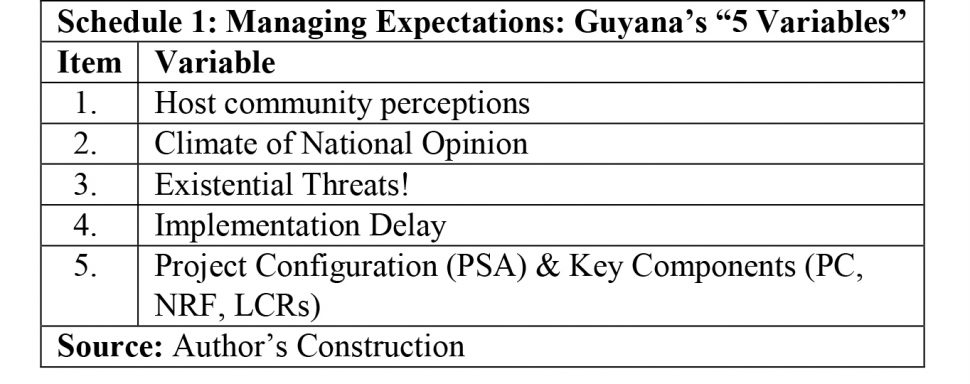Last week’s column dealt with a few of the more theoretical aspects of the role that “public expectations” play in general economic growth theory and the modelling of natural resources policy management. Today’s column focuses on the specifics of managing these expectations as a development challenge facing Guyana, as it seeks to spend its expected Government Take, anticipated to come on-stream circa the mid-2020s.
Experiences elsewhere reveal that managing public expectations can be summarily expressed as a simple function of several societal variables. In the case of Guyana, I shall concentrate on five of these variables as the country seeks to realise the value of its petroleum wealth through production and export. To be sure, these five variables are not exhaustive; however, I believe, they represent the most crucial, given circumstances prevailing in Guyana.
Five Variables
The first variable is derived from the widespread observation that the host community (or local geographic area) where natural resources are discovered is of crucial importance for setting the national tone. Experiences further reveal that the impact on the host community is likely to be greater, the larger is the resource find. The second variable is of equal significance. That is, the climate of national opinion. This indicates prevailing expectations in regard to the successful commercialisation of the resource find. Together, these two variables indicate how substantial the impact of both variables on public awareness and consciousness.


